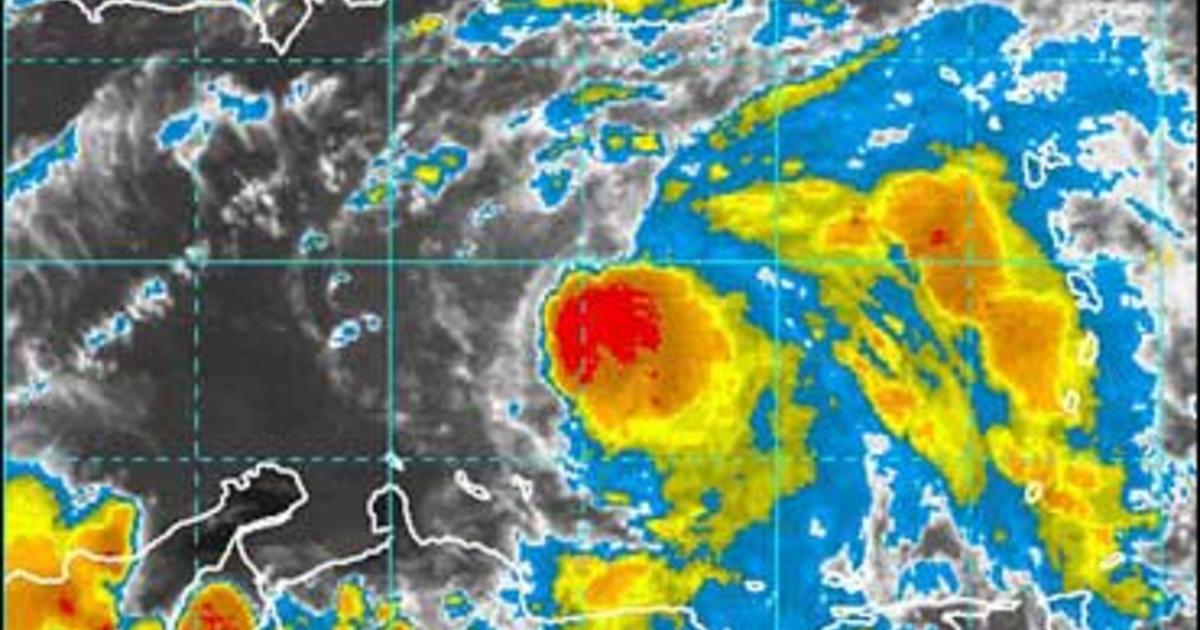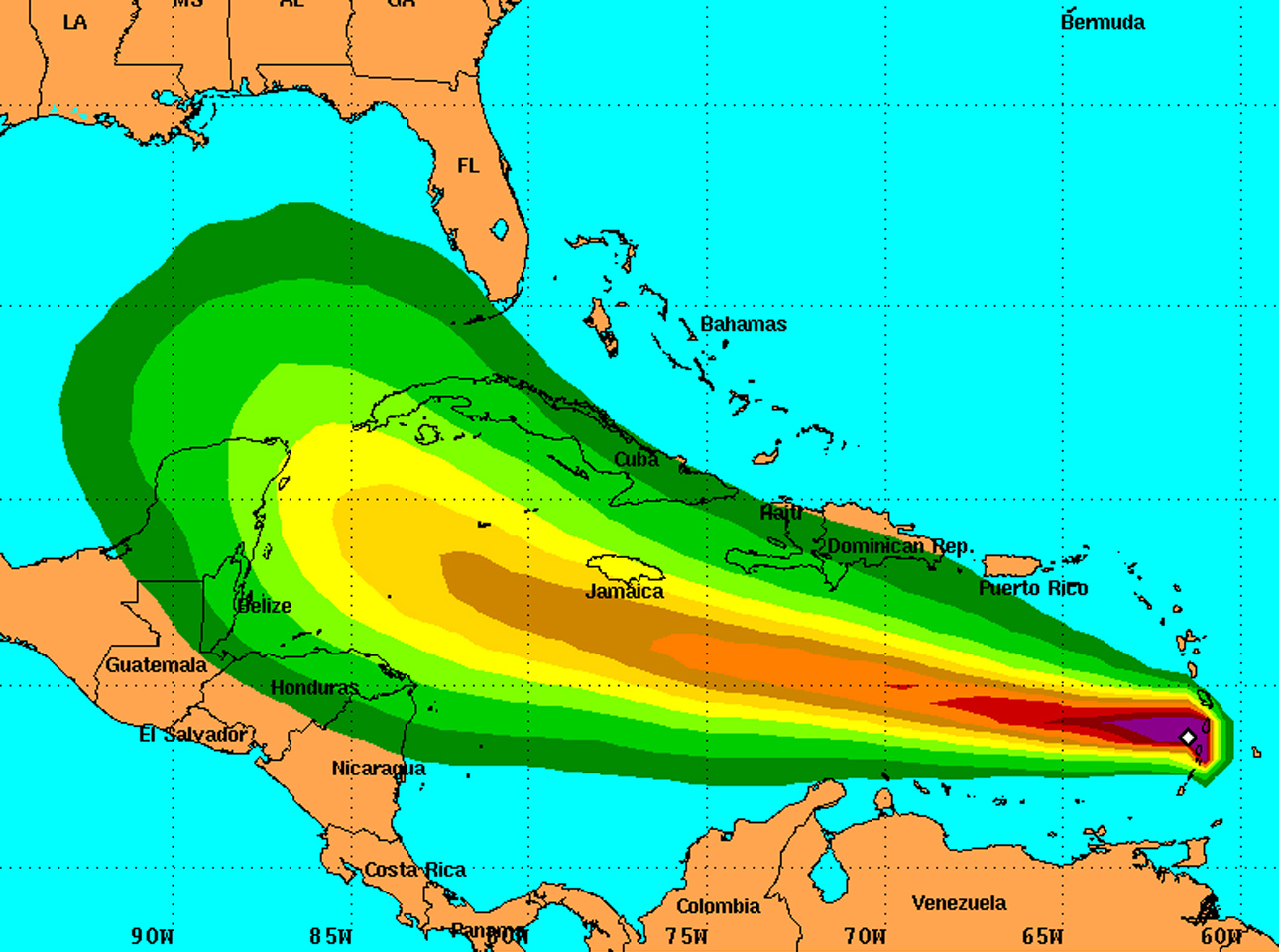Tropical Storm Ernesto’s Formation and Development

Tropical Storm Ernesto, the fifth named storm of the 2023 Atlantic hurricane season, emerged from a tropical wave that originated over the eastern Atlantic Ocean on August 16, 2023. This wave, characterized by a cluster of thunderstorms, slowly organized as it moved westward across the tropical Atlantic.
Ernesto’s Track and Intensity
Ernesto’s journey began near the Cape Verde Islands, where it initially remained a tropical wave. As it moved west-northwestward, it gradually intensified, becoming a tropical depression on August 19, 2023. This intensification was fueled by favorable atmospheric conditions, including warm ocean waters and low wind shear.
Ernesto reached its peak intensity as a tropical storm on August 20, 2023, with maximum sustained winds of 45 mph (75 km/h).
After reaching its peak, Ernesto gradually weakened as it encountered drier air and increased wind shear. By August 23, 2023, it had degenerated into a remnant low pressure system over the central Atlantic Ocean.
Factors Contributing to Ernesto’s Development
Several factors contributed to the formation and development of Tropical Storm Ernesto. These included:
- Warm Ocean Waters: Tropical cyclones thrive on warm ocean waters, which provide the heat and moisture needed for their development. The Atlantic Ocean was unusually warm during the period Ernesto formed, providing a conducive environment for its intensification.
- Low Wind Shear: Wind shear, the change in wind speed and direction with height, can disrupt the formation and intensification of tropical cyclones. During Ernesto’s development, wind shear was relatively low, allowing the storm to organize and strengthen.
- Pre-existing Disturbance: The tropical wave that spawned Ernesto was already a well-organized cluster of thunderstorms, providing a foundation for the storm’s formation.
Impact of Tropical Storm Ernesto

Tropical Storm Ernesto, though classified as a relatively weak storm, left a significant impact on several regions, primarily in the Caribbean and parts of the United States. Its effects were felt most acutely in areas where it made landfall and where its heavy rains and strong winds combined to create challenging conditions.
Areas Affected and Damage
The storm’s path traversed several regions, impacting numerous locations. Ernesto made landfall in the Dominican Republic, causing widespread damage, particularly in the eastern and southeastern regions. Its impact extended to Haiti, Puerto Rico, and the U.S. Virgin Islands.
The storm’s heavy rains triggered significant flooding in many areas, particularly in low-lying regions. The Dominican Republic, Haiti, and Puerto Rico experienced extensive flooding, inundating homes, businesses, and infrastructure. Landslides were also a major concern, particularly in mountainous areas, where the saturated ground became unstable. These landslides disrupted transportation routes and caused damage to homes and infrastructure.
In addition to flooding and landslides, Tropical Storm Ernesto brought strong winds, causing damage to buildings, trees, and power lines. The storm’s impact on infrastructure was significant, leading to power outages, disruptions in communication networks, and damage to roads and bridges.
Impact on Agriculture
The storm’s heavy rains and strong winds had a significant impact on agriculture, particularly in the Dominican Republic and Haiti. Crops, such as coffee, sugarcane, and bananas, were severely damaged by flooding and wind damage. This damage resulted in significant economic losses for farmers and impacted the overall agricultural output of the affected regions.
Impact on Human Life
Tropical Storm Ernesto resulted in several deaths and injuries across the affected regions. The storm’s heavy rains and flooding caused many fatalities, primarily due to drowning and landslides. Additionally, the storm’s impact on infrastructure and transportation led to disruptions in emergency services, making it difficult to reach those in need. The storm’s aftermath also caused displacement and hardship for many people, as they were forced to evacuate their homes or lost their livelihoods.
Response and Recovery Efforts: Tropical Storm Ernesto Hurricane

The immediate aftermath of Tropical Storm Ernesto saw a swift and coordinated response from various organizations, both domestically and internationally. These efforts aimed to mitigate the storm’s impact, provide immediate relief to affected communities, and begin the long process of recovery and rebuilding.
Response Efforts
The response to Tropical Storm Ernesto was a collaborative effort involving local, national, and international organizations, each contributing their expertise and resources.
| Organization | Assistance Provided | Affected Areas |
|---|---|---|
| National Disaster Management Agency (NDMA) | Search and rescue operations, provision of food, water, and shelter, medical assistance | All affected areas |
| Red Cross | Emergency medical services, distribution of relief supplies, psychological support | Hardest-hit areas |
| United Nations Office for the Coordination of Humanitarian Affairs (OCHA) | Coordination of international aid, assessment of needs, logistical support | All affected areas |
| World Health Organization (WHO) | Disease prevention and control, medical supplies, training of local health workers | Areas at risk of outbreaks |
| International Organization for Migration (IOM) | Shelter and relocation assistance, protection of vulnerable groups, post-disaster recovery support | Areas with significant displacement |
Recovery Efforts, Tropical storm ernesto hurricane
The recovery phase following Tropical Storm Ernesto was a long and complex process, requiring sustained efforts to rebuild infrastructure, address long-term impacts, and promote community resilience.
- Infrastructure Repair and Reconstruction: Significant investments were made to repair and rebuild damaged infrastructure, including roads, bridges, power lines, and communication networks. This process involved the mobilization of construction workers, heavy equipment, and materials, and was often hindered by logistical challenges and the availability of resources.
- Economic Recovery: The storm caused significant economic disruption, impacting businesses, agriculture, and tourism. Recovery efforts included providing financial assistance to affected businesses, supporting farmers in restoring their livelihoods, and promoting tourism recovery initiatives.
- Social and Psychological Support: The storm had a profound psychological impact on affected communities. Recovery efforts included providing counseling services, supporting community-based initiatives, and promoting social cohesion to help individuals and families cope with trauma and loss.
- Long-Term Resilience Building: Recognizing the potential for future storms, recovery efforts focused on strengthening community resilience. This involved promoting disaster preparedness, investing in early warning systems, and developing sustainable infrastructure to mitigate the impacts of future events.
Challenges in Response and Recovery
Despite the extensive efforts, the response and recovery efforts faced significant challenges, including:
- Logistical Difficulties: The storm’s impact on infrastructure, particularly roads and communication networks, created logistical challenges in reaching affected areas and delivering aid. This required innovative solutions, such as using helicopters and boats for transportation.
- Resource Constraints: The response and recovery efforts required significant financial resources, which were often limited, especially in developing countries. This highlighted the importance of international aid and partnerships to support disaster relief and recovery.
- Community Resilience: Building community resilience was a key aspect of the recovery process. This involved empowering communities to participate in decision-making, promoting self-reliance, and fostering a culture of preparedness.
Tropical storm ernesto hurricane – Tropical Storm Ernesto has been downgraded to a tropical depression, but its remnants continue to bring heavy rain and strong winds to the southeastern United States. While we focus on the storm’s impact, it’s worth remembering that someone out there just won a life-changing amount of money, as you can find out by checking what state won powerball last night.
Regardless of who claimed the prize, Ernesto’s impact will be felt for days, leaving a trail of disruption and potential flooding in its wake.
Tropical Storm Ernesto is a reminder of the unpredictable nature of weather, just as the lottery is a reminder of the unpredictable nature of luck. While we’re all focused on the potential impact of Ernesto, I’m sure many are also wondering where was the winning powerball ticket sold last night.
It’s a stark contrast – one a potential threat, the other a chance for fortune. But both are examples of life’s surprises, and both demand our attention, whether it’s preparing for a storm or checking our numbers.
